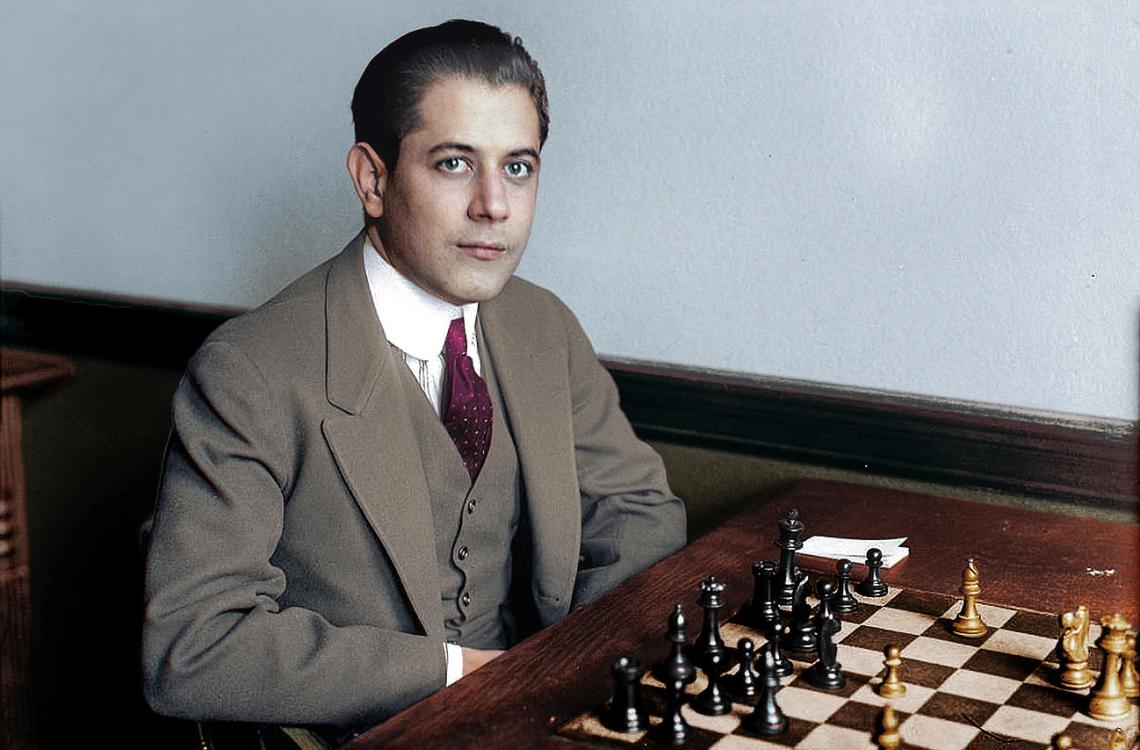
The Playing Strength and Style of José Raúl Capablanca
Playing strength and style
As an adult, Capablanca lost only 34 serious games. He was undefeated from February 10, 1916, when he lost to Oscar Chajes in the New York 1916 tournament, to March 21, 1924, when he lost to Richard Réti in the New York International tournament. During this streak, which included his 1921 World Championship match against Lasker, Capablanca played 63 games, winning 40 and drawing 23. In fact, only Marshall, Lasker, Alekhine and Rudolf Spielmann won two or more serious games from the mature Capablanca, though in each case, their overall lifetime scores were minus (Capablanca beat Marshall +20−2=28, Lasker +6−2=16, Alekhine +9−7=33), except for Spielmann who was level (+2−2=8). Of top players, only Keres had a narrow plus score against him (+1−0=5). Keres's win was at the AVRO 1938 chess tournament, during which tournament Capablanca turned 50, while Keres was 22.
Statistical ranking systems place Capablanca high among the greatest players of all time. Nathan Divinsky and Raymond Keene's book Warriors of the Mind (1989) ranks him fifth, behind Garry Kasparov, Anatoly Karpov, Bobby Fischer and Mikhail Botvinnik—and immediately ahead of Emanuel Lasker. In his 1978 book The Rating of Chessplayers, Past and Present, Arpad Elo gave retrospective ratings to players based on their performance over the best five-year span of their career. He concluded that Capablanca was the strongest of those surveyed, with Lasker and Botvinnik sharing second place. Chessmetrics (2005) is rather sensitive to the length of the periods being compared, and ranks Capablanca between third and fourth strongest of all time for peak periods ranging in length from one to 15 years. Its author, the statistician Jeff Sonas, concluded that Capablanca had more years in the top three than anyone except Lasker, Karpov and Kasparov—though Alekhine had more years in the top two positions. A 2006 study found that Capablanca was the most accurate of all the World Champions when compared with computer analysis of World Championship match games, but this analysis was criticized for using a second-rank chess program, Crafty, modified to limit its calculations to six moves by each side, and for favoring players whose style matched that of the program. A 2011 computer analysis by Bratko and Guid using Rybka 2 and Rybka 3 found similar results to the 2006 Crafty analysis for Capablanca.
Boris Spassky, World Champion from 1969 to 1972, considered Capablanca the best player of all time. Bobby Fischer, who held the title from 1972 to 1975, admired Capablanca's "light touch" and ability to see the right move very quickly. Fischer reported that in the 1950s, older members of the Manhattan Chess Club spoke of Capablanca's performances with awe.
Capablanca excelled in simple positions and endgames, and his positional judgment was outstanding, so much so that most attempts to attack him came to grief without any apparent defensive efforts on his part. But he could play great tactical chess when necessary—most famously in the 1918 Manhattan Chess Club Championship tournament, when Marshall sprang a deeply analyzed prepared variation on him, which he refuted while playing under the normal time limit (although ways have since been found to strengthen the Marshall Attack). He was also capable of using aggressive tactical play to drive home a positional advantage, provided he considered it safe and the most efficient way to win, for example against Spielmann in the 1927 New York tournament.
